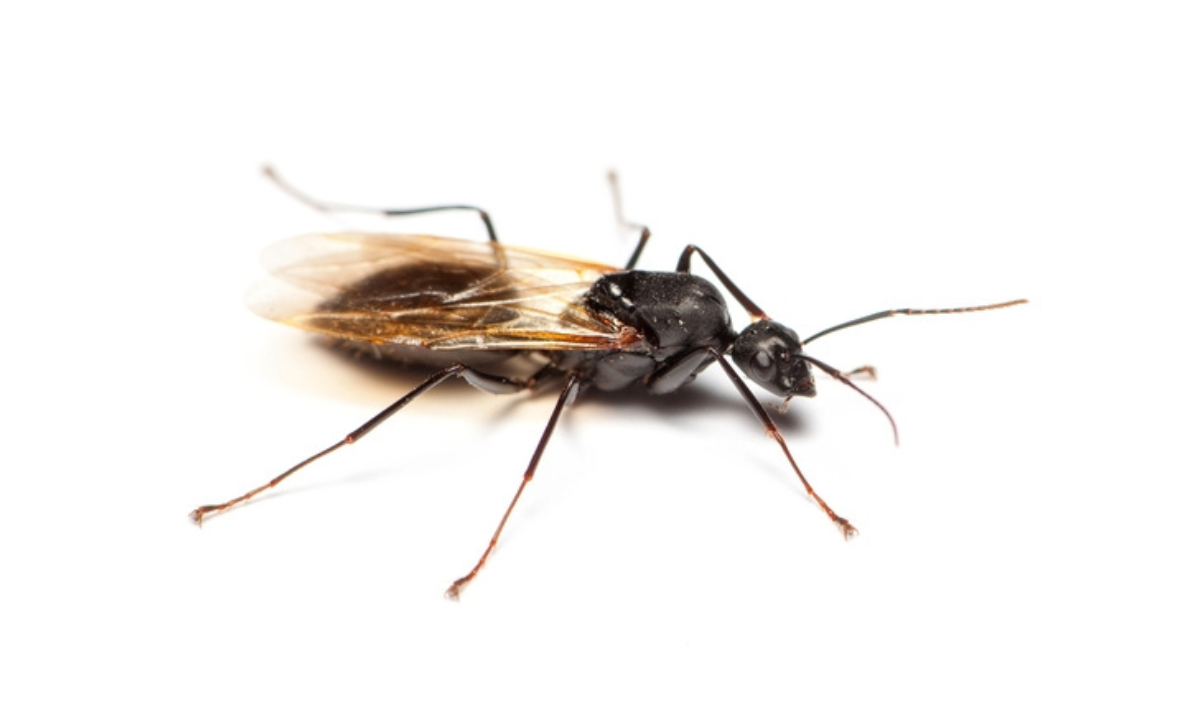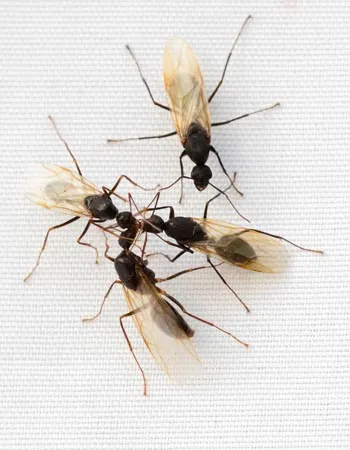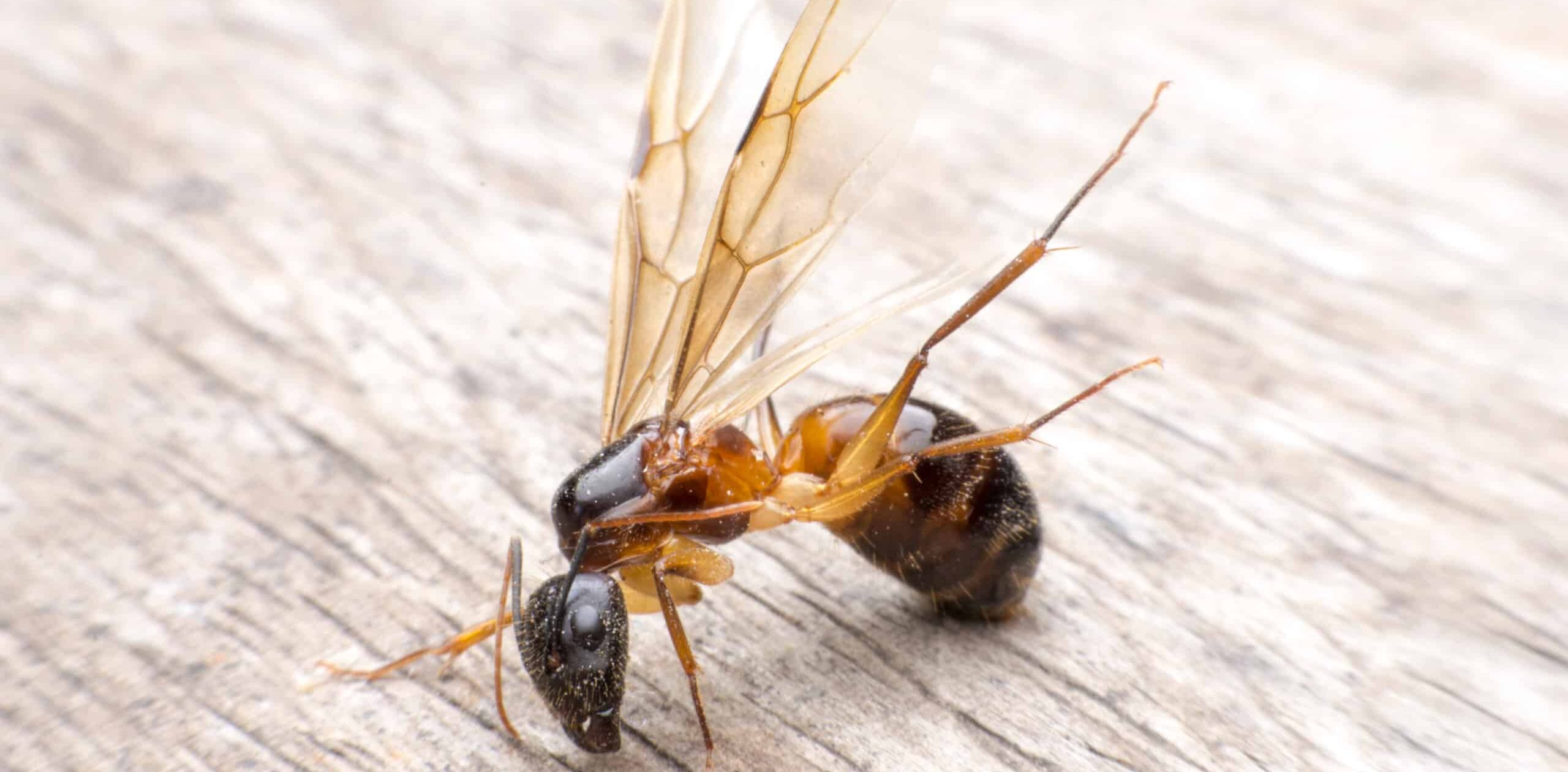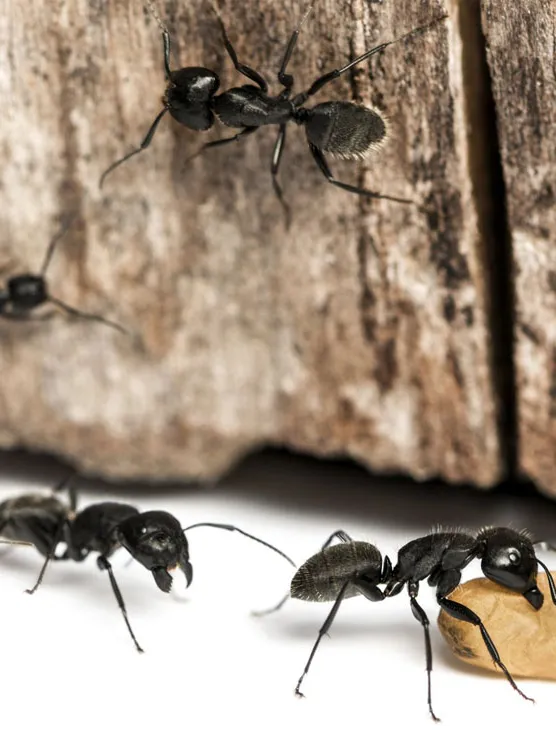Carpenter Ants

Carpenter Ants in Massachusetts
When it comes to household ants, carpenter ants stand out as one of the most destructive. Unlike odorous house ants, which are mostly a nuisance, carpenter ants are capable of damaging the structural integrity of your home. While they don’t consume wood like termites, they excavate it to create smooth tunnels and galleries for their nests. Over time, this excavation can weaken wooden beams, walls, and supports.
In Massachusetts, carpenter ants are a frequent invader—especially in wooded or coastal areas such as Mashpee, Orleans, and Wellfleet, where older homes and moisture-rich conditions provide ideal nesting environments. Their activity is often more noticeable in spring, but colonies remain active year-round if they establish themselves indoors.
What Makes Carpenter Ants Different?
Homeowners often mistake carpenter ants for termites or other ant species, which can lead to delayed treatment. Carpenter ants are larger than most ants, typically ¼ to ½ inch long, and range from black to dark brown, sometimes with reddish coloring. Unlike termites, they have a distinct “waist” and bent antennae.
The key difference lies in their behavior: carpenter ants do not eat wood, but they hollow it out to build nests. They prefer damp, decaying wood, making areas near leaks, crawl spaces, and window sills prime targets.
How Do You Know If You Have Carpenter Ants?
Carpenter ant infestations can go unnoticed for months because the damage they cause is hidden inside walls or wooden supports. However, there are several signs that may indicate their presence:
Sawdust-like material (frass): Unlike termites, carpenter ants push wood shavings out of their tunnels. You may see small piles of this debris near walls or windows.
Rustling noises: At night, you may hear faint rustling sounds coming from walls or ceilings where they’re tunneling.
Large black ants indoors: Seeing a few carpenter ants inside—especially during cooler months—often means there is a nearby nest.
Damaged wood with smooth galleries: If wood is opened, carpenter ant tunnels have a clean, sanded appearance compared to the rough damage left by termites.
Because they often establish satellite colonies indoors while keeping the main colony outside, locating all nests can be challenging without professional help.

Why Carpenter Ants Thrive on Cape Cod
Massachusetts homes, particularly those in coastal areas like Barnstable and Falmouth, are vulnerable because of the abundance of moisture and wooded surroundings. Carpenter ants are drawn to water-damaged wood, which is common in older homes or in areas where humidity levels remain high. Once inside, they can move quickly between exterior and interior nests, making control more complex than with other ant species.
Their activity tends to spike in late spring and summer, but indoor colonies can stay active throughout winter, continuing to expand and cause damage unseen.
The Risks of Ignoring a Carpenter Ant Problem
While carpenter ants work slower than termites, the damage they cause accumulates over time. Their tunneling can compromise wooden beams, door frames, and support structures, leading to expensive repairs. Additionally, untreated infestations often expand as satellite colonies form in new areas of the home.
Because they prefer wood that has already been softened by moisture, their presence is also a warning sign that your home may have underlying water damage.
How to Prevent Carpenter Ant Infestations
Prevention involves addressing the conditions that attract these pests in the first place. Homeowners should:
Repair leaks around roofs, windows, and plumbing promptly.
Keep gutters clean and ensure proper drainage away from the foundation.
Remove decaying wood and fallen branches from around the home.
Store firewood at least 20 feet away from the house and off the ground.
Seal cracks or openings where ants could enter.
By reducing moisture and access to decaying wood, you make your home less appealing to carpenter ants.

ServPest’s Approach to Carpenter Ant Control
Carpenter ants require a targeted approach to fully eliminate the problem. Simply spraying the visible ants won’t reach the colony, and disturbing a nest may cause it to split, creating more colonies to manage.
At ServPest, we begin with a comprehensive inspection to locate both indoor satellite nests and the main outdoor colony. Using advanced treatment methods—including baiting and precision applications—we eliminate the entire colony, not just the ants you see. We also identify and address conditions contributing to the infestation, helping prevent future issues.
With years of experience serving Cape Cod and Plymouth County, ServPest understands the behavior of carpenter ants in this region better than anyone.

FAQs About Carpenter Ants
While they don’t eat wood like termites, their excavation can still cause significant structural damage if left untreated.
Seeing a few large black ants indoors often means there’s a nearby satellite nest. The majority of the colony remains hidden.
Store-bought sprays may kill visible ants but won’t reach the hidden nests. Professional treatments are necessary to eradicate colonies.
They prefer damp, decayed wood but can expand into dry wood once established.
With professional control, results are often seen quickly, but full elimination depends on the extent of the infestation and the number of nests.
Protect Your Home with ServPest
Barnstable County, MA
Plymouth County, MA
Mon - Fri 7:00 am - 7:00 pm
Sat 8:00 am - 3:00 pm
Sun: Closed
Operation Hours: Mon-Sat: 7am - 7pm
Office: (508) 815-4842
Alternate: (508) 815-3114
info@servpest.com

